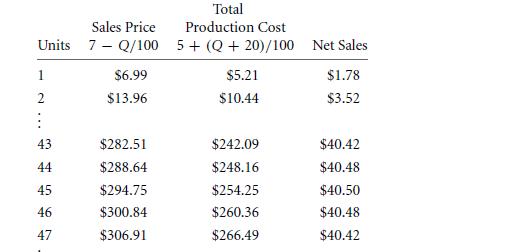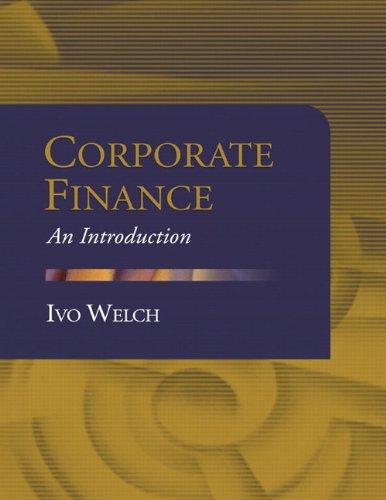(a) The profit of the firm is Profit(x = 10) = 10 . [$20 $5 ...
Question:
(a) The profit of the firm is Profit(x = 10) = 10 . [$20 − $5 − $15/(10 + 1)] ≈ $136.36.
(b) With 11 goods, the cost to produce is $5 + $15/(11 + 1) = $6.25. With 10 goods, it was $5 +
$15/(10 + 1) ≈ $6.36. The marginal production cost is $6.25 . 11 − $6.36 . 10 = $5.15.
(c) The marginal cost would now be an additional $1 times 10 in rebates. It would therefore cost the firm
$5.15 plus $10, or $15.15. Thus, because the marginal revenue of $19 exceeds the marginal cost of $15.15, the firm should still sign everyone up.
Q 12.13
(a) The table shows that the optimal production is 45 units.
(b) The average per-unit gross sales at Q = 45 is $294.75/45 = $6.55.
(c) The average per-unit production cost at Q = 45 is $254.25/45 = $5.65.
(d) The net sales at Q = 45 are $40.50/45 = $0.90.
(e) From 44 to 45, the marginal per-unit sales is $294.75 − $288.64 = $6.11. From 45 to 46, it is $6.09.
(f) From 44 to 45, the marginal per-unit cost is $254.25 − $248.16 = $6.09. From 45 to 46, it is $6.11.
(g) It is just about $0. (If you move from 44 to 45 units, or from 46 to 45 units, you gain 2 cents.) This is what it means to be at the optimal production level.
(h) Your average per-unit net change at Q = 45 is still positive, but you should not expand production. If you do, you are ignoring the negative effects that unit number 46 would have on all your earlier units.
This means that you would earn less money in total, not more.
Step by Step Answer:







